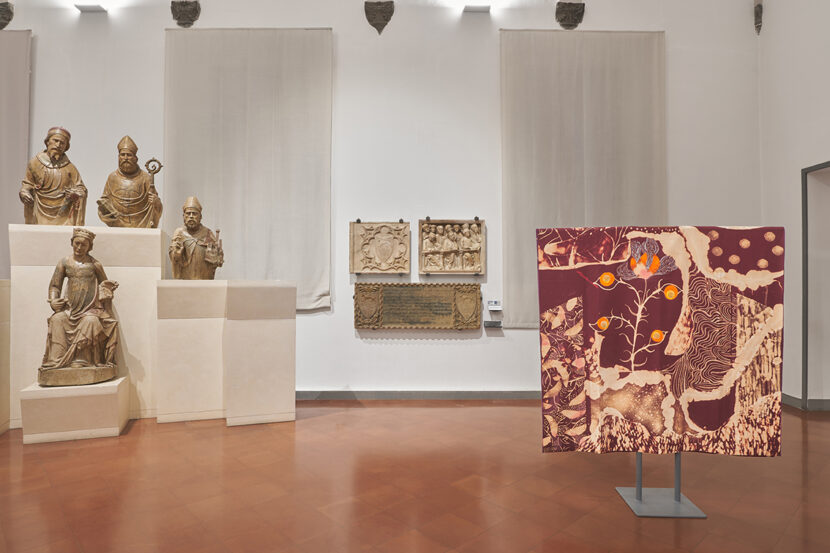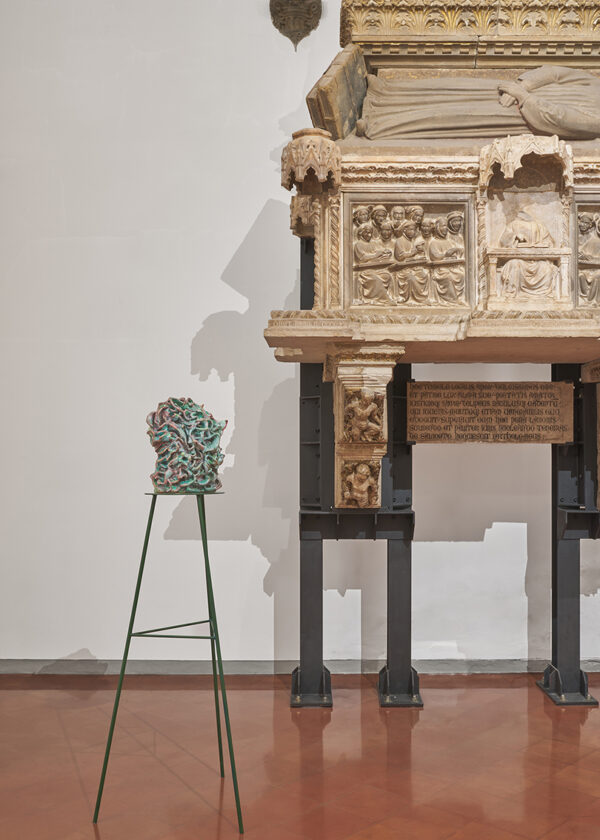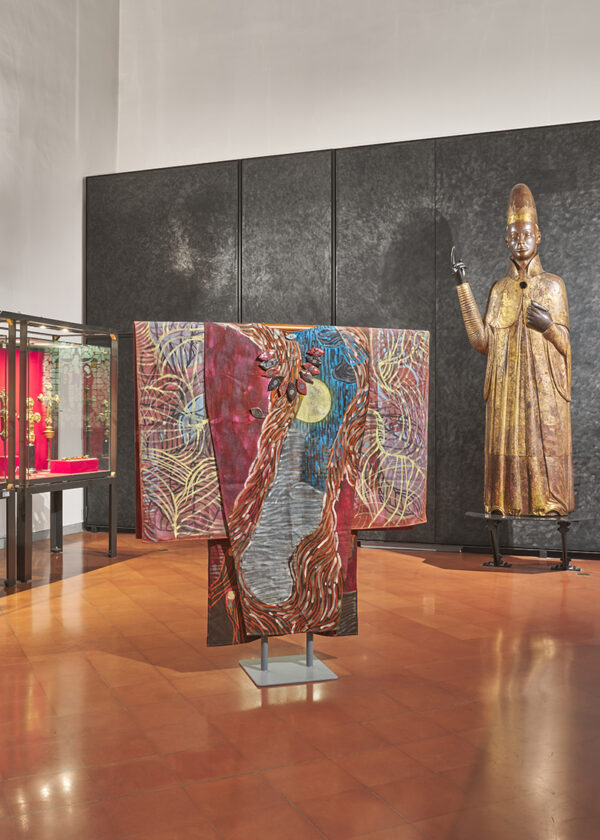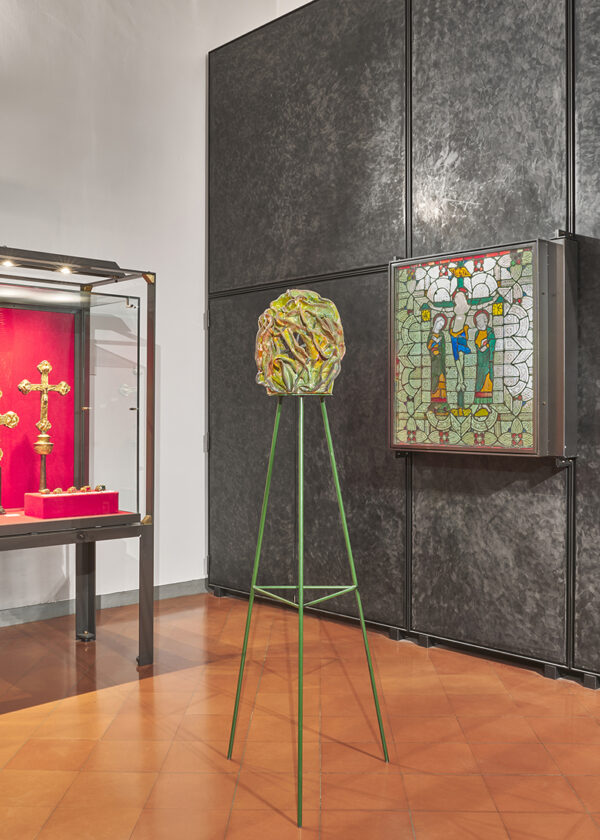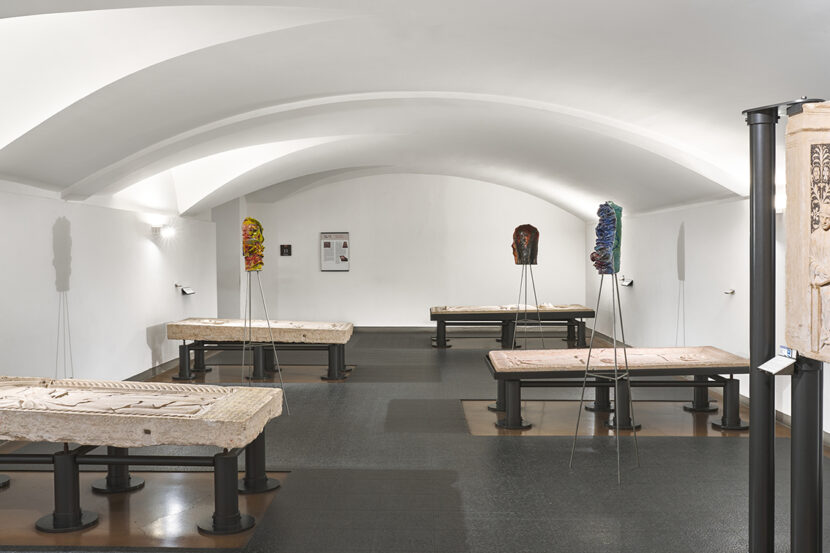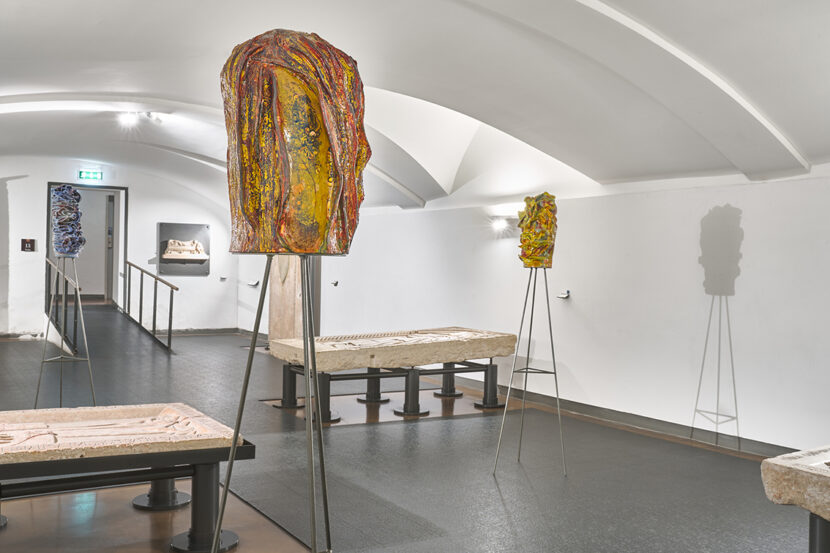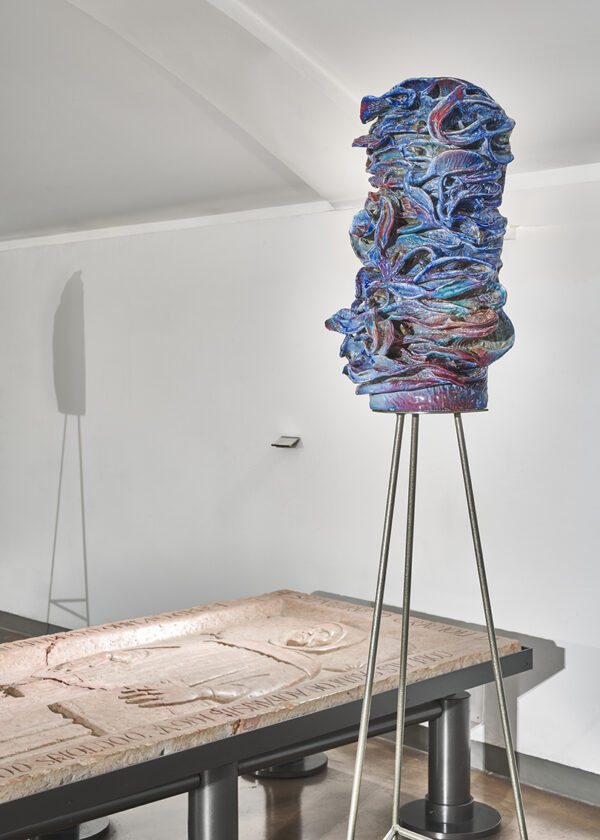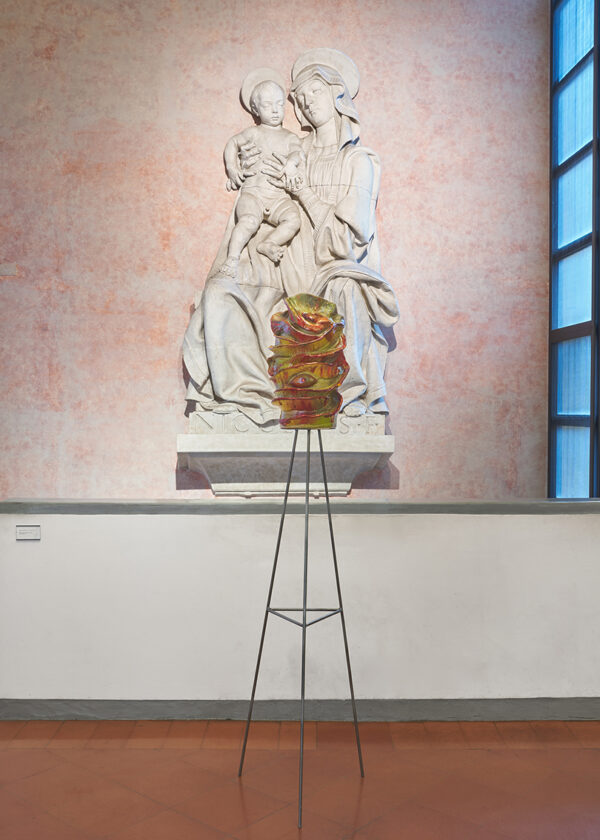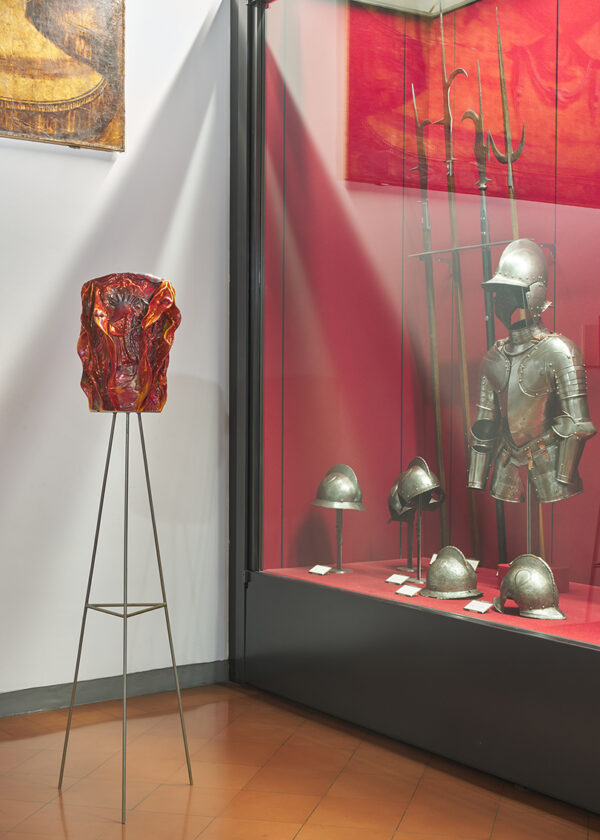Vestirsi paesaggio
The Civic Museums of Ancient Art of the Civic Museums Sector of Bologna (IT)
14 Dicember- 2 March 2024
Ph Manuel Montasano
Review:
-Exibart Link
-Resto del carlino Link
-Juliet Link
On view from 14 December 2024 to 2 March 2025, the exhibition project is part of the institutional program of ART CITY Bologna 2025, the program of exhibitions, events and initiatives promoted by the Municipality of Bologna in collaboration with BolognaFiere on the occasion of Arte Fiera.
Having lived in Milan, London and Brussels, Alessandro Roma has chosen Faenza as his home of choice for a few years. An “existential” tiredness – he confesses in the interview with Lorenzo Balbi that accompanies the exhibition project – has led him to prefer the Italian provinces to the large cities, wrongly believed to be the privileged places for the development and exercise of the most advanced knowledge. What makes him feel connected to places on the ‘periphery’ are the space of freedom and the possibility of working unconstrained by a dimension of time compared to the dominant forms that are established in large cities, even more so if the possibilities that open up a comparison with a centuries-old tradition of technical skills acquired in the assiduous exercise of artistic ‘doing’.
Roma’s research focuses on plant motifs that are left free to expand both on the two-dimensional plane of painting and on the three-dimensional plane of sculpture and applied arts. If the starting point of the creative process is mostly a recognizable fact, his works are to be understood as mental landscapes traced by the wavering flow of thought, where the perspective flattens and the sign is lost in the interweaving of shapes and colors, questioning the nature of perception.
For more than a decade Alessandro Roma has used ceramics as an elective reference material, through which to investigate the aspects at the center of his interest – the decomposition of the form, the stratification of color on the surface, the sign that intervenes creating a dialogue between inside and outside – which have led him towards a total encounter between sign, form and color.
From the need to relate to the environment and to new surfaces to open up to new views, the artist’s need to present his work in installation environments in which the three-dimensional compositions are conceived as extensions of painting was born.
And as an environment to inhabit with his works, Roma looked to the Museo Civico Medievale for the artistic project he composed there, letting himself be transported by the suggestions of the permanent collections and the stories they return room after room and building a link between ancient and contemporary.
The nine works on display, selected from the production of the last year, rediscuss the idea of painting, sculpture and ceramic production in a search for continuous transgression. Set up in rooms 4, 7, 13, 14 and 18 of the tour, in addition to attracting the viewer’s attention, they try to give a new look at the collection itself.
The seven ceramic sculptures positioned on iron pedestals, entitled Mask, refer to bodies whose ceramic form recalls fragments of vases/planters that a regenerating and instinctive metamorphic energy, or an unexpected alienating spell, is transforming into masks. The two fabric dresses designed by the same artist, painted in tempera and always associated with enameled ceramic, entitled Dressing landscape, become a painting for the images that appear on the fabric, but also recall the body becoming a second skin for their possibility of being worn.
Alessandro Roma describes the meaning of the project in this way: “The contemporary vision that feeds on stratifications and that evokes through the use of ancient materials such as ceramics and fabric, returns cyclically and on the vestiges of history and culture, without limits of geography and time: a work that is part of the equally stratified framework of the Museo Civico Medievale, a dialectical tension with its precious treasures and its events inscribed between the walls and in the objects on display”.
The exhibition occasion has therefore oriented the artist’s research towards a dialogue with the art objects of the museum collections, however following lines of experimentation that belong to his usual paths: the relationship with artistic craftsmanship, the fascination for compositional techniques, the study and recovery of materials and manual skills that are being lost in the hyper-technological contemporaneity and increasingly determined by artificial intelligence, the loss of manual knowledge.
The title of the exhibition, Dressing in the landscape, effectively summarises the main focus that supported its reasons: reflecting on the interaction with the surrounding world, understood both as a vital environment and as a subject

